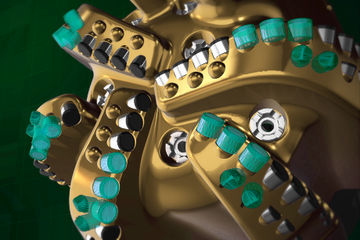Overview
Challenges
- Decrease bit walk caused by hard stringers, natural fractures, and faults
- Increase drilling speed and efficiency
- Reduce wellbore tortuosity
Results
- Drilled entire lateral interval in a single run on multiple wells in the Permian Basin
- Reduced slide time on a well in the Midland Basin by 36%
- Reduced slide footage by 6% on a well in the Delaware Basin
- Out-drilled two competitors on the same pad in the Delaware Basin by 25 ft/hr, reducing drilling time by 20%
Across the Permian Basin, hard stringers, natural fractures, and faults in the various formations can cause drill bits to grab and walk. This tendency to walk moves the wellbore away from the planned path. Drillers are then forced to correct, and sometimes overcorrect, for bit walk.
Too often, the result is a tortuous wellbore that looks more like a helix than the straight line the customer expected. Beyond adding time and complication to the drilling operation, well tortuosity has some long-lasting effects. It can cause the bottomhole assembly (BHA) to stick during or after drilling operations, can lead to problems while completing wells, and can actually reduce production rates and overall recovery.
Download the PDF to read the full case study.

